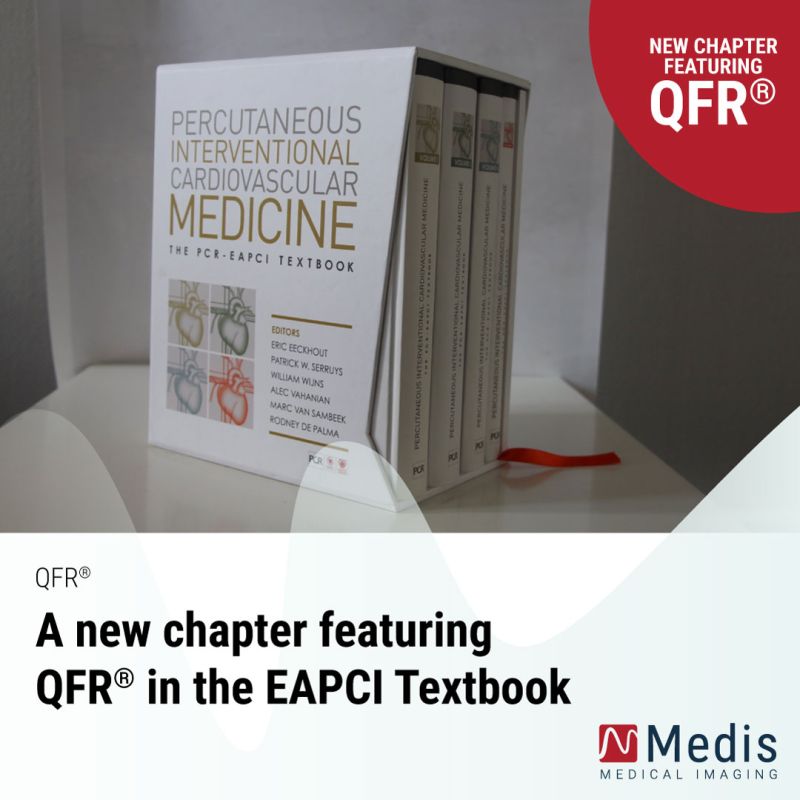News
A new chapter featuring QFR® in the EAPCI textbook
The PCR-EAPCI Percutaneous Interventional Cardiovascular Medicine Textbook is a first-of-its-kind, all-inclusive reference whose scope and content are patient-centered and promote good, evidence-based clinical practices.
The essential reference book for all interventional practitioners! There are 118 illustrated chapters dedicated to the diagnosis, coronary interventions, structural heart disease, and peripheral interventions. The PCR-EAPCI textbook covers everything clinical and practical that today’s interventional cardiologist needs to know
This new chapter, called Functional coronary angiography to assess epicardial vessels and the microcirculation, includes QFR®. We are glad to be featured in the prestigious textbook for interventional cardiologists.
We are glad to be featured in the prestigious textbook for interventional cardiologists
Medis Medical Imaging
A small piece from the chapter:
The most widely investigated FCA is Quantitative Flow Ratio (QAngio XA-3D, Medis Medical Imaging System, Leiden, the Netherlands and AngioPlus, Shanghai Pulse Medical Technology Inc., Shanghai, China). QFR is a computation method for calculating FFR, derived from 3D-quantitative coronary angiography (QCA), based on 2 orthogonal angiographic projections of the coronary vessel separated by at least 25º of angulation. Once the vessel has been reconstructed into a 3D model, hemodynamic pressure drops are calculated at consecutive 6 mm segments according to derived friction and turbulence pressure coefficients, and subsequently integrated into the entire analyzed segment.

Share this article on:
